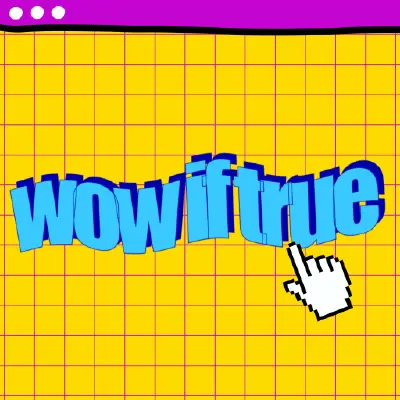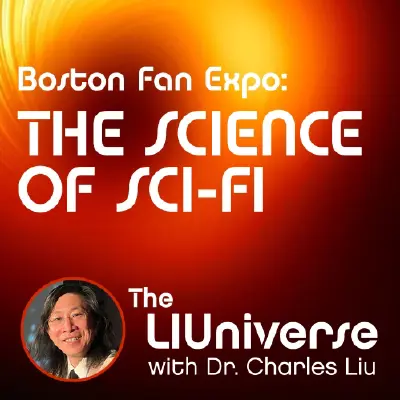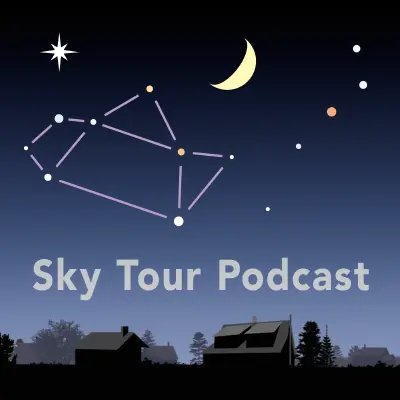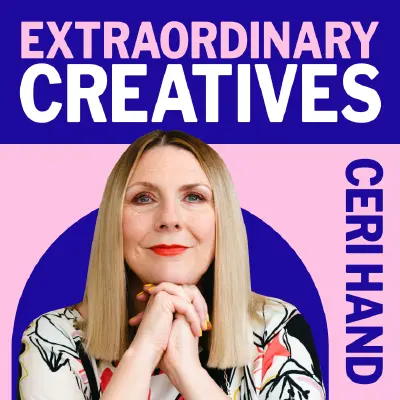Episodes

Well folks, there's no getting around it, this one's mostly about D&D. AKA the OGL two, sequel to OGL, 2 OGL 2 furious, dropped ten hours before we recorded and so of course we have to talk about copyright, derivative content, and how not to alienate your entire fanbase with one simple trick. Also, Shrek is there. Also, the pink sauce is back. You're welcome! Links D&D Creative Commons: https://techcrunch.com/2023/01/12/dungeons-and-dragons-ogl-wizards-of-the-coast/ Did Shrek name himself? https://www.tumblr.com/aryashi/706291086771011584 Find Us Online Twitter: https://twitter.com/wowiftruepod Instagram: https://www.instagram.com/wowiftrue Facebook: https://www.facebook.com/wowiftrue Patreon: https://www.patreon.com/wowiftrue Website: https://wowiftrue.com/ Email: wowiftruepod@gmail.com About Us Wow If True was created by Isabel J. Kim and Amanda Silberling. Our music is by Sam Rizer, our cover art is by Eric Silver, and our production is by Allison Mills and David Newtown.

Foundations of Amateur Radio
Recently I had the opportunity to use a piece of professional equipment to measure the so-called unwanted or spurious emissions that a transceiver might produce. In describing this I finished off with the idea that you could use a $20 RTL-SDR dongle to do these measurements in your own shack. I did point out that you should use enough attenuation to prevent the white smoke from escaping from your dongle, but it left a question, how much attenuation is enough?
An RTL-SDR dongle is a USB powered device originally designed to act as a Digital TV and FM radio receiver. It's normally fitted with an antenna plugged into a socket on the side. I'll refer to it more generically as a receiver because much of what we're about to explore is applicable for other devices too.
Using your transceiver, or transmitter, as a signal source isn't the same as tuning to a broadcast station, unless you move it some distance away, as-in meters or even kilometres away, depending on how much power you're using at the time. Ideally we want to connect the transmitter output directly to the receiver input so, at least theoretically, the RF coming from the transmitter stays within the measuring set-up between the two devices.
Assuming you have a way to physically connect your transmitter to your receiver we need to work out what power levels are supported by your receiver.
For an RTL-SDR dongle, this is tricky to discover. I came across several documents that stated that the maximum power level was 10 dBm or 0.01 Watt, but that seemed a little high, since an S9 signal is -73 dBm, so I kept digging and discovered a thoughtful report published in August 2013 by Walter, HB9AJG. It's called "Some Measurements on DVB-T Dongles with E4000 and R820T Tuners".
There's plenty to learn from that report, but for our purposes today, we're interested in essentially two things, the weakest and strongest signals that the receiver can accommodate. We're obviously interested in the maximum signal, because out of the box our transmitter is likely to be much too strong for the receiver. We're going to need to reduce the power by a known amount using one or more connected RF attenuators.
At the other end of the scale, the minimum signal is important because if we add too much attenuation, we might end up below the minimum detectable signal level of the receiver.
Over the entire frequency range of the receivers tested in the report the minimum varies by about 14 dB, so let's pick the highest minimum from the report to get started. That's -127 dBm. What that means is that any signal that's stronger than -127 dBm is probably going to be detectable by the receiver and for some receivers on some frequencies, you might be able to go as low as -141 dBm.
At the other end of the scale the report shows that the receiver range is about 60 dB, which means that the strongest signal that we can use is -67 dBm before various types of distortion start occurring. For comparison, that's four times the strength of an S9 signal.
So, if we have a 10 Watt transmitter, or 40 dBm, we need to bring that signal down to a maximum of -67 dBm. In other words we need at least 107 dB of attenuation and if we have a safety margin of two, we'll need 110 dB of attenuation, remember, double power means adding 3 dB.
So, find 110 dB of attenuation. As it happens, if I connect most of my attenuators together, I could achieve that level of attenuation, but there's one further issue that we'll need to handle and that's power.
As you might recall, an attenuator has several attributes, the most obvious one is how much attenuation it brings to the party. It's specified in dB. My collection of attenuators range from 1 dB to 30 dB. Another attribute is the connector it comes with, I have both N-type and SMA connectors in my collection, so I'll need some adaptors to connect them together. One less obvious and at the cheap end of the scale, often undocumented, aspect of an attenuator is its ability to handle power. Essentially we're turning an RF signal into heat, so an attenuator needs to be able to dissipate that heat to handle what your transmitter is throwing at it.
I said that from a safety perspective I'd like to be able to handle 20 Watts of power. Fortunately we don't need all our attenuators to be able to handle 20 Watts, just the first one directly connected to the transmitter. If we were to use a 20 Watt, 30 dB attenuator, the signal through the attenuator is reduced to 0.02 Watts and the next attenuator in line only needs to be able to handle that power level and so-on.
To get started, find about 110 dB of attenuation, make sure it can handle 20 Watts and you can start playing.
Before you start keying up your transmitter, how might you handle a range of different transmitters and power levels and can you remove an attenuator when you test on a different frequency?
On that last point, let me say "No", you cannot remove the attenuator when you're measuring a different frequency.
I'm Onno VK6FLAB

How realistic is the human augmentation depicted in comic, games and movies? To find out, Dr. Charles Liu welcomes the CEO/founder of Neurobionics Dr. MJ Antonini, experimental psychologist Liam McMahon, and our own social media maven and comic/gaming uber-geek Sarah Cotten to the stage for our first-ever appearance at the Boston Fan Expo for a discussion about the science of science fiction, and most particularly, BRAINS! (NOTE: This panel took place during the 2023 writers strike, so our panelists purposefully avoided naming characters our properties out of respect for the striking creators.)
The panel starts off with a discussion of the feasibility of the kind of human augmentation featured in the dystopian near-future game series Deus Ex. Dr. Antonini, whose company is all about human augmentation and wearable robotics, says that it’s not as far away from reality as you might think. Dr. McMahon talks about using magnetism to perceive what’s going on inside the human mind. Meanwhile, Sarah comes up with a reality TV show concept where people can see through the prosthetic eye of the show’s protagonist.
When Liam brings up the concept of memory augmentation, sharing and retrieval, Charles immediately reminds us all of Philip K. Dick’s “We Can Remember It for You Wholesale,” perhaps better known as the Arnold Schwarzenegger movie “Total Recall.”
You’ll hear about exoskeletons that can help paralyzed people walk and even kick a soccer ball, and research by David Sinclair at Harvard into slowing down the aging process or even reversing the aging of the human brain. Of course, as Sarah points out, living forever is different than being young forever, unless of course you’re an ageless vampire with a bulging bank account. The panel discusses the impact of immortality on resources, offspring, and the human psyche, which gives Chuck the opportunity to reference “The Last Question” by Isaac Asimov.
Of course, there’s no avoiding the subject of Artificial Intelligence and the Internet, and the morality and ethics of both, which naturally leads into a discussion of dystopian, post-apocalyptic fiction and games like “Fallout” and the seminal and influential 1984 anime fantasy film “Nausicaä of the Valley of the Wind” by the legendary Hayao Miyazaki.
The panel ends with a discussion of Alzheimer’s disease, brain augmentation and uploading, what makes personality, and the metaphysical thought experiment known as the Ship of Theseus.
Normally at conventions like this, we end with a vigorous Q&A session, and this event was no exception. But this time if you’d like to hear the Q&A and the rest of the panel content that didn’t make it into this video, you’ll have to check it out on Patreon.
We hope you enjoy this episode of The LIUniverse, and, if you do, please also support us on Patreon.

Sep 02, 2023
September Podcast: Explore the Summer Triangle
Sky Tour Astronomy Podcast: Upcoming Celestial Events ❭
Daylight hours are getting shorter in the Northern Hemisphere, which means the hours for stargazing are getting longer throughout September! So stream or download this month’s Sky Tour astronomy podcast for lots of great tips on what you can see this month in the evening sky.
The post September Podcast: Explore the Summer Triangle appeared first on Sky & Telescope.

Aug 31, 2023
AI Superpowers for Frontend Developers, with Vercel Founder/CEO Guillermo Rauch
No Priors: Artificial Intelligence | Machine Learning | Technology | Startups ❭
Everything digital is increasingly intermediated through web user experiences, and now AI development can be frontend-first, too. Just ask Guillermo Rauch, the founder and CEO of Vercel, the company behind Next.js. In this episode of No Priors, hosts Sarah Guo and Elad Gil speak to Guillermo about their AI SDK and AI templates, and why Vercel is focused on making it easy for every frontend engineer to build with AI. They also discuss what applications Guillermo's most excited about, how to prepare for the world of bots, whether the winds are changing in web architectures, and why he believes in the AI-fueled 100X engineer.
Prior to Vercel, Guillermo co-founded several startups and created the JavaScript library, Socket.io, which allows for real-time bi-directional communication between web clients and servers.
Show Links:
Guillermo Rauch - CEO & Founder of Vercel | LinkedIn
Vercel
Vercel AI
Sign up for new podcasts every week. Email feedback to show@no-priors.com
Follow us on Twitter: @NoPriorsPod | @Saranormous | @EladGil | @rauchg
Show Notes:
(0:00:00) - Vercel's AI Strategy and Future Plans
(0:10:36) - AI Frameworks, Observability, and Bot Mitigation
(0:17:24) - Crawling the Web and Architecture Changes
(0:27:54) - AI's Impact on Web Personalization

Apr 23, 2025
6 Fixes for Stuck Artists: Real-World Ways to Get Your Work Noticed, Valued & Moving Again
Extraordinary Creatives ❭
Have you ever sat staring at your work, wondering why it’s not resonating? In this episode, Ceri talks about why you might be stuck in how you are being seen, or not seen and why this doesn’t mean you are failing. She shares six real-world strategies to help you shift gears and make your creative practice feel energised, intentional, and visible again. KEY TAKEAWAYS Share the real reason behind your work. Most artists can describe what their work looks like, but that is only surface level. Reveal what drives you to create meaningful connections. Stop hiding behind your artist statement. Authenticity matters, you need to sound human to build a connection and when people know what you care about, they will remember you and refer you. Speak clearly about your process, most people will first encounter your work online and being able to picture and imagine your process counts. Use your titles as an emotional hook. This is often forgotten, but it is a quick win. Make your work relevant to the now. Art isn’t separate from the world, so make sure people understand how your work connects with the world today. Be specific about what you want. Start with one goal and share it everywhere you are, including your bio and newsletters. BEST MOMENTS “Being stuck doesn’t mean you’re failing, it often means you’re ready to evolve.” “People don’t just connect with aesthetics, they connect with story. With purpose. With the why.” “Make your artist statement human, not academic.” “Clarity creates movement, it helps you focus your energy and opens doors because others can see exactly what you’re aiming for.” PODCAST HOST BIO With over 30 years in the art world, Ceri has worked closely with leading artists and arts professionals, managed public and private galleries and charities, and curated more than 250 exhibitions and events. She sold artworks to major museums and private collectors and commissioned thousands of works across diverse media, from renowned artists such as John Akomfrah, Pipilotti Rist, Rafael Lozano-Hemmer and Vito Acconci. Now, she wants to share her extensive knowledge with you, so you can excel and achieve your goals. **** Ceri Hand Coaching Membership: Group coaching, live art surgeries, exclusive masterclasses, portfolio reviews, weekly challenges. Access our library of content and resource hub anytime and enjoy special discounts within a vibrant community of peers and professionals. Ready to transform your art career? Join today! https://cerihand.com/membership/ **** Build Relationships The Easy WayOur self-study video course, "Unlock Your Artworld Network," offers a straightforward 5-step framework to help you build valuable relationships effortlessly. Gain the tools and confidence you need to create new opportunities and thrive in the art world today. https://cerihand.com/courses/unlock_your_artworld_network/**** Book a Discovery Call Today To schedule a personalised 1-2-1 coaching session with Ceri or explore our group coaching options, simply email us at hello@cerihand.com **** Discover Your Extraordinary Creativity Visit www.cerihand.com to learn how we can help you become an extraordinary creative.

The GGG Podcast breaks down the latest news in the gaming industry. Check out the video version here; YouTube: https://youtu.be/k88sSa7i8oIJoin us this week as we discuss, Major Game Releases: -Lost Skies *Correction* Published by Humble Games -Days Gone Remastered News: -Star Wars Zero Company Announced -Battlefield returns back to full destructible environments -Baldur’s Gate 3 Final Update. -Marvel Rivals Big Head Mode? -Monster Hunter Wilds First Seasonal Event Main Topic: -Back to Oblivion #gaming #podcast #xbox #playstation #nintendo #starwars #battlefield #monsterhunter #oblivion #oblivionremastered #marvelrivals #baldursgate3 #daysgone #lostskies

In this episode of The Fintech Combine, host Kris Kovac chats with Kian Sarreshteh, CEO of InvestiFi, about how their platform helps credit unions compete with fintech giants like Robinhood. Kian discusses “Investing from Checking,” seamless integrations, and their modular approach to offering stocks, ETFs, crypto, and robo-advisory, all designed to attract younger members and keep deposits in-house.Follow the Pod:https://twitter.com/fintechcombineFollow Kris Kovacs:https://twitter.com/ManagementByteshttps://www.linkedin.com/in/kriskovacs/https://www.instagram.com/kriskovacs/The Fintech Combine is Produced and Edited by Anson Beckler-JonesFollow Anson Beckler-JonesInstagram - @ansonandcoYoutube - @ansonandco